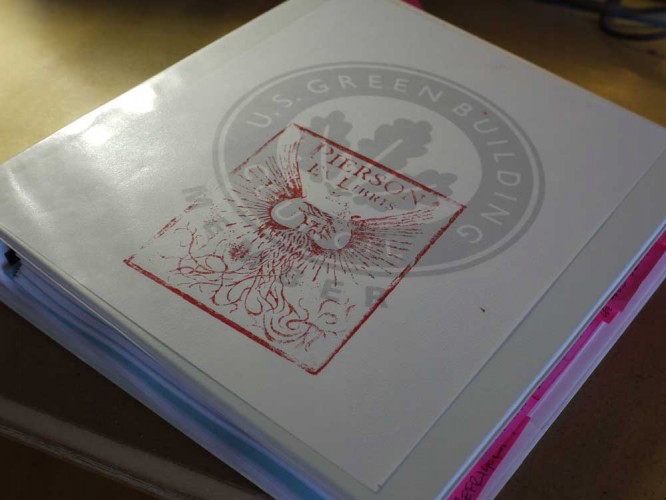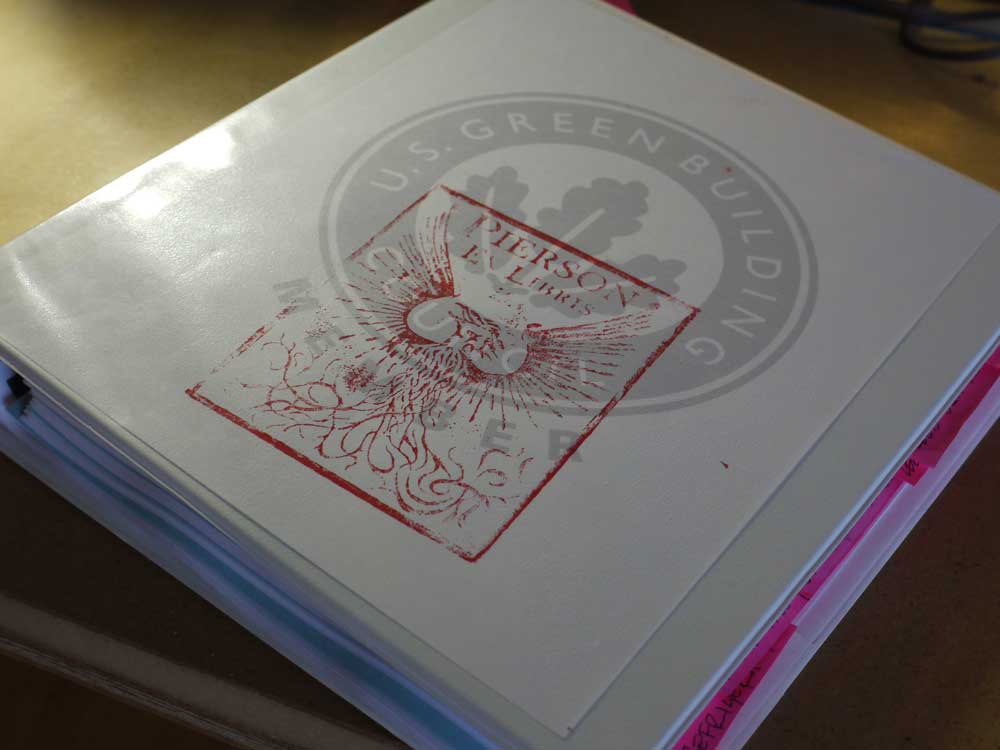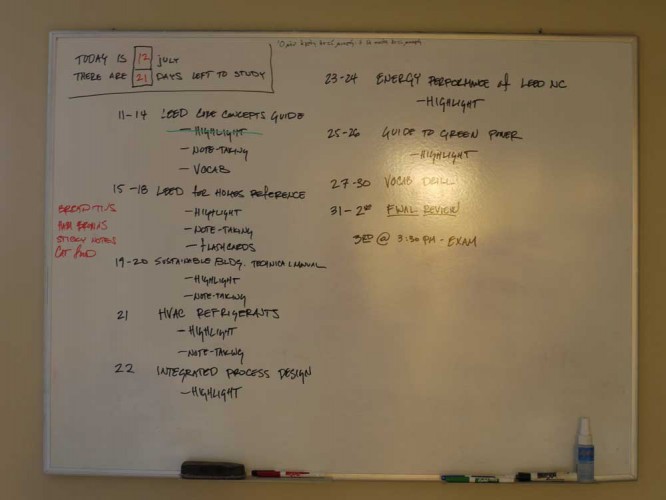Today is 12 July. There are 21 days left to study. I’ve decided to go up for my LEED GA accreditation exam on my own dime, to try an make myself a more competitive candidate if and when there are jobs again, anywhere, ever. If you’re not familiar with it, LEED is a sustainable building program developed by the US Green Building Council. I think it’s pretty great, because it addresses two problems I have with sustainable development as practiced today:
- Greenwashing. Often, a company that wants to build some green cred will do something ostentatious like installing photovoltaics on their building. It makes for great press releases, but for what they spent on solar cells (they’re insanely expensive, if you didn’t know), the company could have improved the insulation and windows, added daylighting controls, upgraded the outdated and inefficient HVAC system, retrofitted the plumbing fixtures with low-flow valves, instituted incentives for carpooling, and on and on and on. The cumulative environmental effect of these small changes, many of which have short-term economic payback, far outweigh the big-dollar measures we associate with Green. LEED requires a whole-building, life-cycle cost approach.
- In the Future, there will be Robots. Media coverage of sustainable efforts tends to focus on Blue Sky research. Cold Fusion. Electrical power generation from sentient dirigibles. Cars made out of sewage. Fine and funding-deserving research all, I’m sure, but it leads to the impression that sustainability is something we will do in the Future, with Future Technology. The thing is, LEED certified buildings have, on average, 13% lower maintenance costs, use 26% less energy, have 27% higher levels of occupant satisfaction, and emit 33% less CO2, right now, today. While LEED rewards innovation, the majority of credits must come from existing, proven, cost effective technologies.
Anyway, I’ve been studying for about a week now, and have three more weeks to go. The study materials cover a lot of subjects that are well outside my comfort zone: construction materials, plumbing, HVAC, sustainable purchasing. As I alluded to in the post title, some of these subjects are more interesting to me than others. But in the end I think it’s going to make me a much better lighting designer, in giving me some awareness of the trade-offs other disciplines deal with, and how my choices affect them. If you’re interested, here are the primary exam materials and the secondary materials that seemed particularly interesting or relevant:
- LEED for Operations & Maintenance Reference Guide-Introduction (U.S. Green Building Council, 2008)
- LEED for Operations & Maintenance Reference Guide-Glossary (U.S. Green Building Council, 2008)
- LEED for Homes Rating System (U.S. Green Building Council, 2008)
- Cost of Green Revisited, by Davis Langdon (2007)
- Sustainable Building Technical Manual: Part II, by Anthony Bernheim and William Reed (1996)
- The Treatment by LEED® of the Environmental Impact of HVAC Refrigerants (LEED Technical and Scientific Advisory Committee, 2004)
- Guidance on Innovation & Design (ID) Credits (US Green Building Council, 2004)
- Guidelines for CIR Customers (US Green Building Council, 2007)
- Green Building & LEED Core Concepts Guide, 1st Edition (US Green Building Council, 2009)
- AIA Integrated Project Delivery: A Guide (www.aia.org)
- LEED for Operations & Maintenance Reference Guide-Introduction (U.S. Green Building Council, 2008)
- LEED for Operations & Maintenance Reference Guide-Glossary (U.S. Green Building Council, 2008)
- LEED for Homes Rating System (U.S. Green Building Council, 2008)
- Cost of Green Revisited, by Davis Langdon (2007)
- Sustainable Building Technical Manual: Part II, by Anthony Bernheim and William Reed (1996)
- The Treatment by LEED® of the Environmental Impact of HVAC Refrigerants (LEED Technical and Scientific Advisory Committee, 2004)
- Guidance on Innovation & Design (ID) Credits (US Green Building Council, 2004)
- Guidelines for CIR Customers (US Green Building Council, 2007)
- Energy Performance of LEED® for New Construction Buildings: Final Report, by Cathy Turner and Mark Frankel (2008)
- Guide to Purchasing Green Power (Environmental Protection Agency, 2004)

My exam is on the 3rd, wish me luck!
Update: I passed! I’m now a LEED Green Associate.

